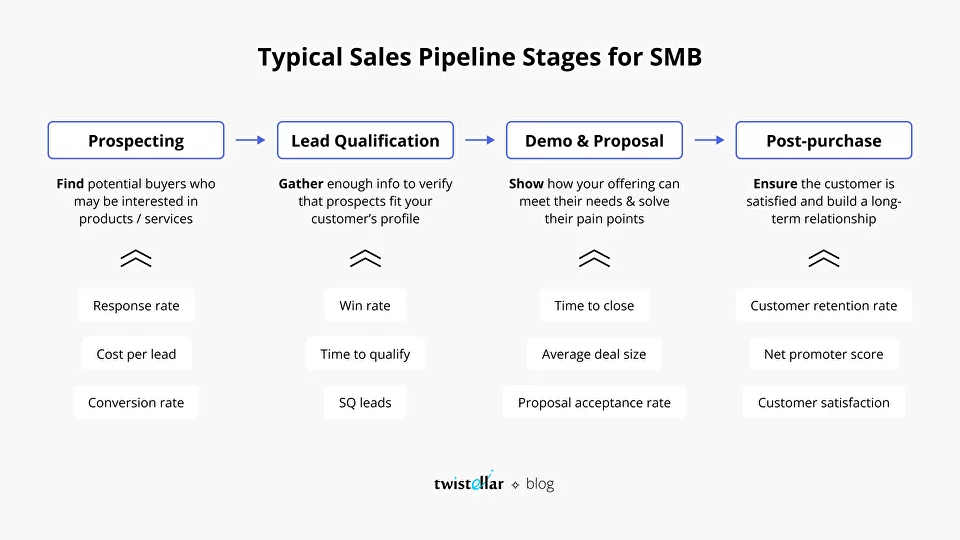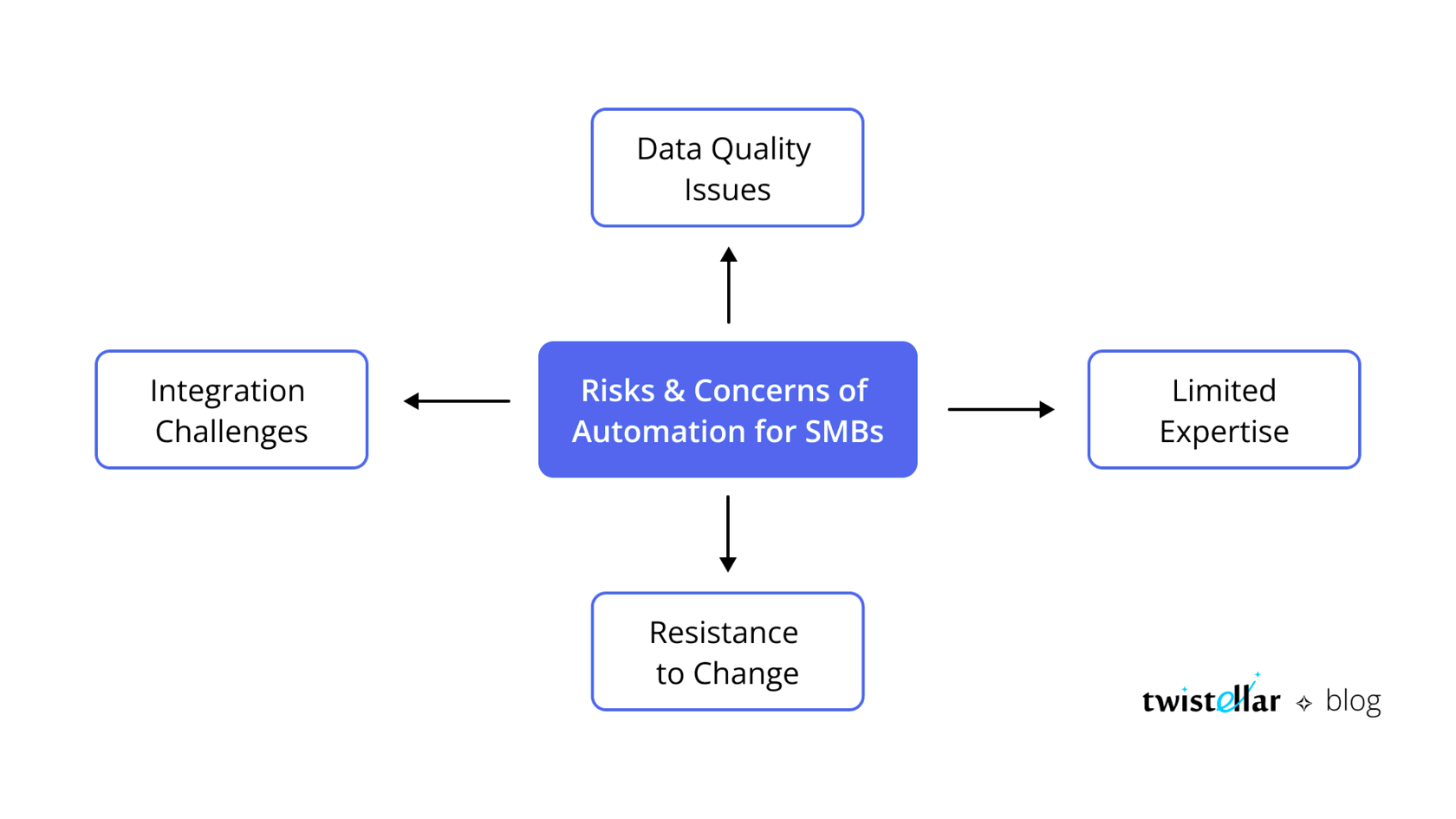
Automating Sales and Marketing for Small Businesses: Examples to Help You Get Started
Every small business springs up as the result of a great idea. At first, the idea and drive seem to be sufficient for keeping the company afloat. However, as time goes on, the need for saving time thanks to established procedures and automation grows in parallel.
Jenny is a Senior Marketing Manager at a small e-commerce retail company, "Small & Medium," with 100+ employees. Jenny is ready to lead the digitization process in the company and recruit a competent team of currently employed specialists to do this. She wants to understand how automation can help reduce manual tasks for her department and her colleagues in Sales.
- Sales and Marketing departments work separately and have their own strategies for lead acquisition: sales reps focus on cold outreach, and marketing activities comprise advertising and social media campaigns
- It's hard to analyze the ROI of marketing campaigns since sales collect all their leads in a spreadsheet, the source is not tracked, and marketing teams use standard tracking tools, such as Google Analytics, while marketing leads are not nurtured
- Lost deals and no clear understanding of all the possible customer touchpoints, such as customer complaints that are dealt with by the support team separately from other departments.
1. Sales Pipeline Management

- Prospecting. The identification of potential consumers is the first step in the sales process. Jenny and the sales team decide to mark "prospects" for all the anonymous but potentially interested audiences: all leads from cold outreach and potential audiences for their advertising campaigns.
- Lead qualification. For a prospect to become a lead, the marketing team decides to offer them the opportunity to fill out a form on the website offering a discount so that they can move these warm leads downstream and find out whether the person is interested in knowing more about their goods and services. They decide to send some email campaigns to prospects that will lead to the form with the discount.
- Demo and proposal. After that, sales teams arrange a meeting or demo to showcase their additional products to prospective customers. If the demo goes well, sales reps create a formal offer.
- Post-purchase. Jenny and the team want to upsell on more expensive options when the time is right. So they decide to enable customer loyalty programs, customer satisfaction surveys, and referral campaigns for their current customers.
2. Marketing Activities to Automate
Email Marketing
- Abandoned Cart Recovery: Jenny and her team can recover lost sales by sending automated emails to customers who have abandoned items in their cart. These emails can include personalized product recommendations, discounts, and reminders to complete their purchase.
- Welcome Emails: Automated welcome emails can be sent to new customers, thanking them for their purchase and providing them with important information about their order, shipping, and delivery.
- Product Recommendations: Email automation can help "Small & Medium" suggest relevant products to their customers based on their previous purchases or browsing history. This can help increase sales and encourage repeat purchases.
- Upselling and Cross-Selling: Automated emails can be sent to customers suggesting complementary or higher-priced products based on their purchase history. This can help increase the average order value and overall revenue.
- Customer Retention: 52% of consumers are likely to switch brands if a company doesn't personalize its communications. Email automation can help Jenny's team to keep their customers engaged by sending personalized emails based on their behavior, preferences, and interests. This can help build brand loyalty and encourage repeat purchases.
Lead Nurturing
The effectiveness of the lead nurturing stage defines how many of them will become actual customers.
- Personalization: Lead nurturing automation will allow Jenny and her team to segment their leads based on social features, purchasing behavior, and other criteria. After that, they will be able to personalize their messaging and offers according to the specific needs and preferences of each lead. The KPIs of the whole department can be improved due to this function.
- Automated Follow-up: Automation of follow-up process can save time and resources of the team. By sending automated follow-up emails, both Sales and Marketing can keep their leads engaged and informed about their products and services. This can increase the chances of converting leads into customers, especially when we talk about e-commerce.
- Lead Scoring: Lead nurturing automation can help Jenny's team to score their leads based on their behavior, engagement, and other factors. As a result, the team will be able to prioritize their leads and focus their resources on those who are most likely to convert. This is the best way for making data-driven decisions and saving time and resources to define prospective leads and increase their conversion rates.
- Drip Campaigns: Lead nurturing automation can help "Small & Medium" create and run drip campaigns that deliver a series of messages and offers to their leads over time. Drip campaigns can help such SMBs build relationships with their leads and keep them engaged until they are ready to make a purchase.
- Sales Alignment: Lead nurturing automation can help align their Sales and Marketing efforts. By providing Sales teams with detailed information about each lead's interests, behavior, and engagement. As a result, they will be able to tailor their approach and close more deals.
Social Media
- Analytics: Social media automation platforms often provide more detailed analytics and widen insights that can help Jenny's team measure the effectiveness of their social media campaigns. Thanks to it, they will be able to improve SMM strategy and improve their results over time.
- Cross-Platform Integration: Social media automation platforms can often integrate with multiple social media platforms, allowing Small & Medium marketing team to manage their social media presence from a single dashboard.
![]() Check out another amazing blog by Twistellar here: Amazon CTI Adapter and Service Cloud Voice: What’s Your Choice?
Check out another amazing blog by Twistellar here: Amazon CTI Adapter and Service Cloud Voice: What’s Your Choice?
3. Risks and Concerns of Automation for SMBs

- Data Quality Issues: Jenny works here only for a year. So before she came, no one cared about the data. She's not sure that it is accurate, up-to-date, and properly segmented for the last fiscal periods, though she did her best to fix that.
- Integration Challenges: If to automate processes properly and fully, Jenny understands that they need to customize CRM software or integrate e-commerce platforms. That can be complex and time-consuming. New software may require additional technical expertise or third-party support.
- Limited Expertise: Everyone in both divisions is doing their own job and knows about automation only in a specific field ... and only in theory. Jenny is not sure what platform suits their needs best, and guesses that her expertise in automating the whole customer flow might be insufficient.
- Resistance to Change: Jenny knows that a couple of employees from Sales are not happy about coming changes. They are used to their usual tasks and processes, and new software scares them. And at the moment, Jenny understands beforehand that some of her subordinates in Marketing will require additional training for successful adoption.




Responses